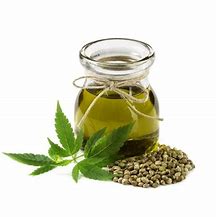Walnut Oil - Juglans regia







Walnut Oil - Juglans regia
Latin Name: Juglans regia
Etymology
Walnut is also known as the royal walnut and the Persian walnut. Regia conveys the meaning of royal, and Juglans means godlike (from jovis - of Jupiter). We speak of Adam's apple, which is probably a mistranslation from the Greek, where it is referred to as Adam's walnut. The prefix wal- is from the Anglo Saxon wealth meaning foreign, and knut means nut.
The Plant and its environment
It has been established from fossil walnuts found in northern Europe that the walnut tree is a pre-ice Age plant. It is native to the Himalayas, China, eastern Europe and places in between, but now grown in all temperate countries for its timber (the lightest wood to be grown in Europe) and its edible nuts. America is the largest walnut producer but the is quite a large nut and oil industry in France.
The deciduous trees have a greyish brown bark and can grow to a height of 50 metres (97 feet) though they tend to be trimmed very occasionally to a more manageable height for nut collection. The globe-like green fleshy fruits (drupers) containing the nut appear singly or in small groups of two or three. The chief constituent present in the fresh plant (found in the leaf and the stain) is juglone which has antibacterial and fungicidal qualities. It is interesting to note that the leaf contains a small quantity of essential oil (Bruneton 1995)
The Oil
A deep golden brown oil is obtained from the kernel; containers should be stored in a cool place away from the light when the oil will keep for a maximum of twelve months. The refined oil, unlike the cold-pressed oil, is light in colour, has a bland taste and a low odour: it has superior keeping qualities to that of the organic oil.
Method of Extraction
On a small scale, the walnuts are first cracked with a wooden mallet to remove the shell, then the kernel is ground and pressed to yield about 50% oil. The kernels are roasted first when producing the oil for culinary purposes, to increase the flavour.
Principal Constituents
| Type | Based On | Content - % |
| Saturated fatty acids units | ||
| C16:0 | palmitic acid | 7-8 |
| C18:0 | stearic acid | 2-3 |
| Typical saturated fatty acid unit content | 10 | |
| Monounsaturated fatty acid units | ||
| C16:1 | palmitoleic acid | 0-02 |
| C18:1 | oleic acid | 18 (16-36) |
| Typical monounsaturated acid unit content | 18 | |
| Polyunsaturated fatty acid units: | ||
| C18:2 | linoleic acid | 60 (40-70) |
| C18:3 | linolenic acid | 11-14 |
| Typical polyunsaturated fatty acid unit content | 73 |
Reference: Carrier Oils For Aromatherapy & Massage:: Len price with ian Smith & Shirley Price
Articles-Most Read
- Home
- Contact Us
- Coconut Oil-2
- Absorption Ratings for Carrier Oils
- Cold Pressing Method
- What are Essential Fatty Acids
- Cherry Kernel Oil
- Fixed Oils and Skin Penetration
- Hempseed Oil
- Almond Oil
- Cocoa butter
- Camelina Oil
- Antibacterial Effects Of Carrier Oil
- Coconut Oil
- Lime Blossom Oil (macerated)
- Carrot Oil, Wild Carrot Oil (macerated)
- Apricot Kernel Oil
- Kukui Nut Oil
- Jojoba Wax
- Pumkin Seed Oil - Cucurbita maxima, C. pepo
- Passion Flower OIl (Macerated)
- Hydrocotyle Oil (macerated)
- Palm Kernel Oil
- Rapeseed Oil - Carrier Oil
- Nutrients
Who's On Line
We have 57 guests and no members online
Articles-Latest
- How to Make Homemade Olive Oil: A Step-by-Step Guide
- 20 Evidence-Based Aloe Vera Oil Benefits For Skin, Hair & Health
- Peanut oil - Cold pressed - Are There Health Benefits? How To Make
- What Are the Health Benefits of Black Seed Oil?
- Comfrey oil Infused
- Chamomile Flowers Infused Oil
- Calendula Flowers Infused Oil
- Arnica Flowers Infused Oil
- How To Make Herb-Infused Oils
- DIY avocado oil for healthy skin
- How To Make Coconut Oil
- 8 Benefits of Mustard Oil, Plus How to Use It
- SHOREA STENOPTERA SEED BUTTER
- Shea Butter- 7 Amazing Benefits Of Shea Butter
- Monoi Oil For Hair & Skin
- Mango Seed Oil
- Cohune Oil Is The Next Big Thing
- Brazil Nut OIl
- 7 Impressive Benefits Of Allspice
- Camelina Oil Benefits, Uses, and Side Effects




